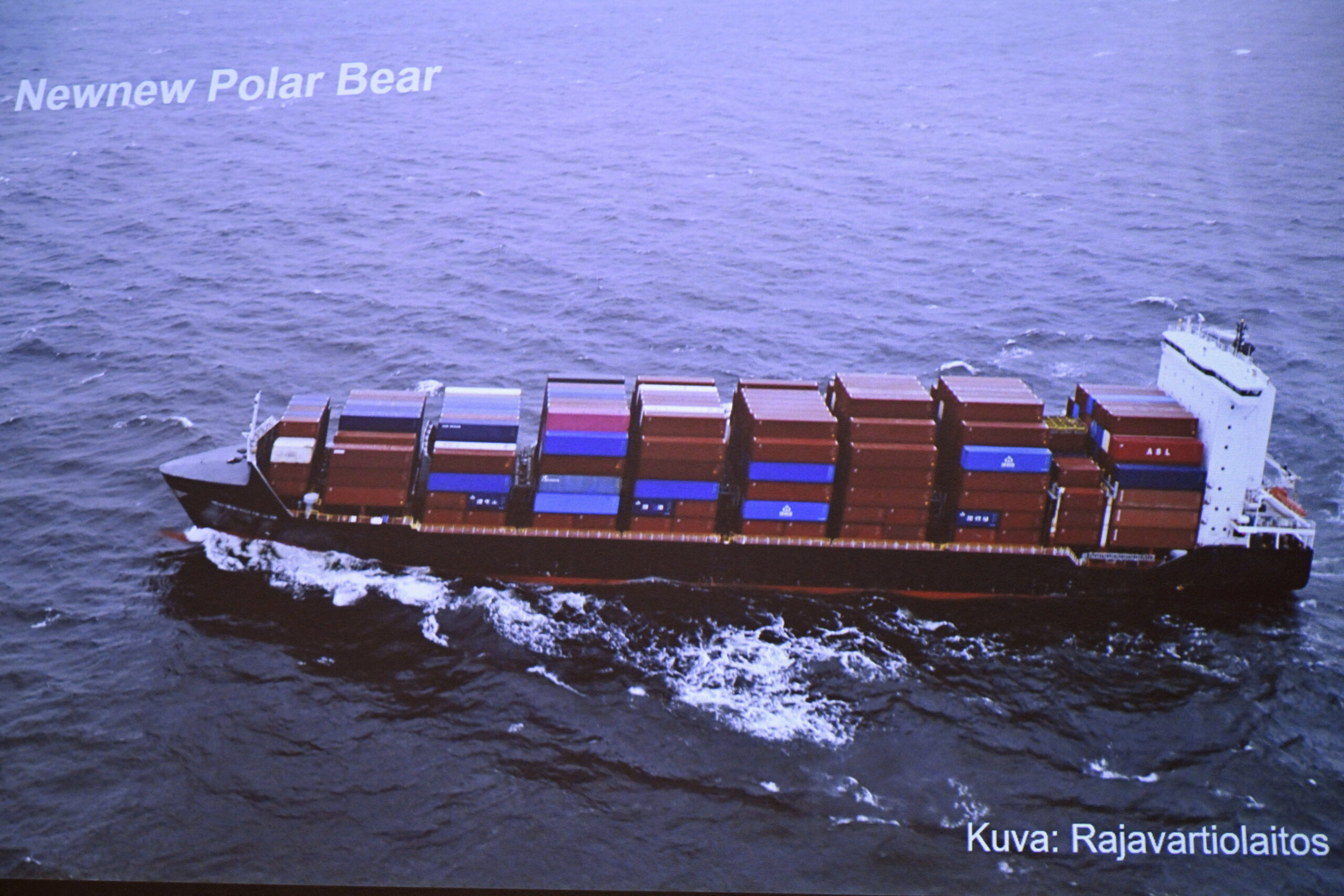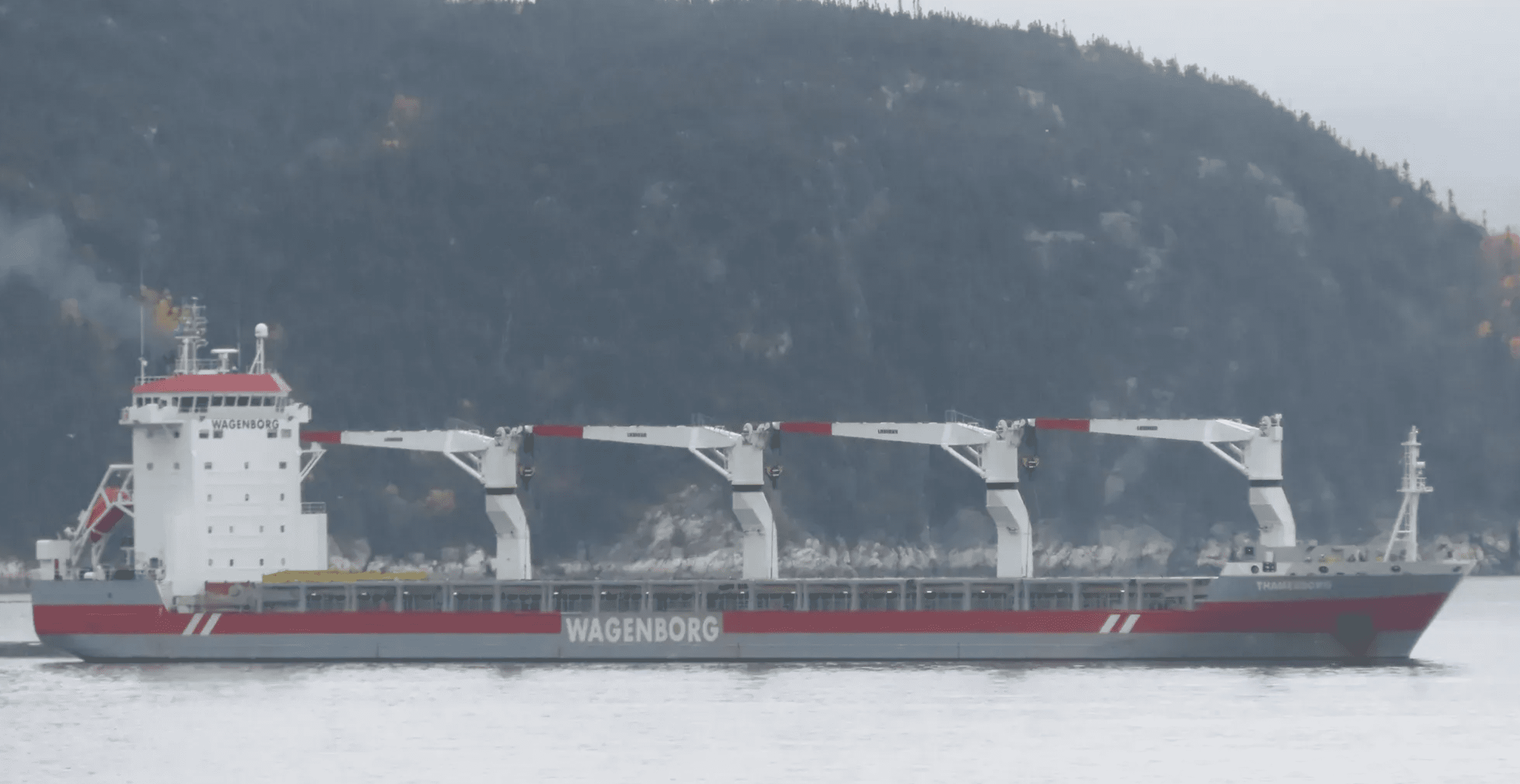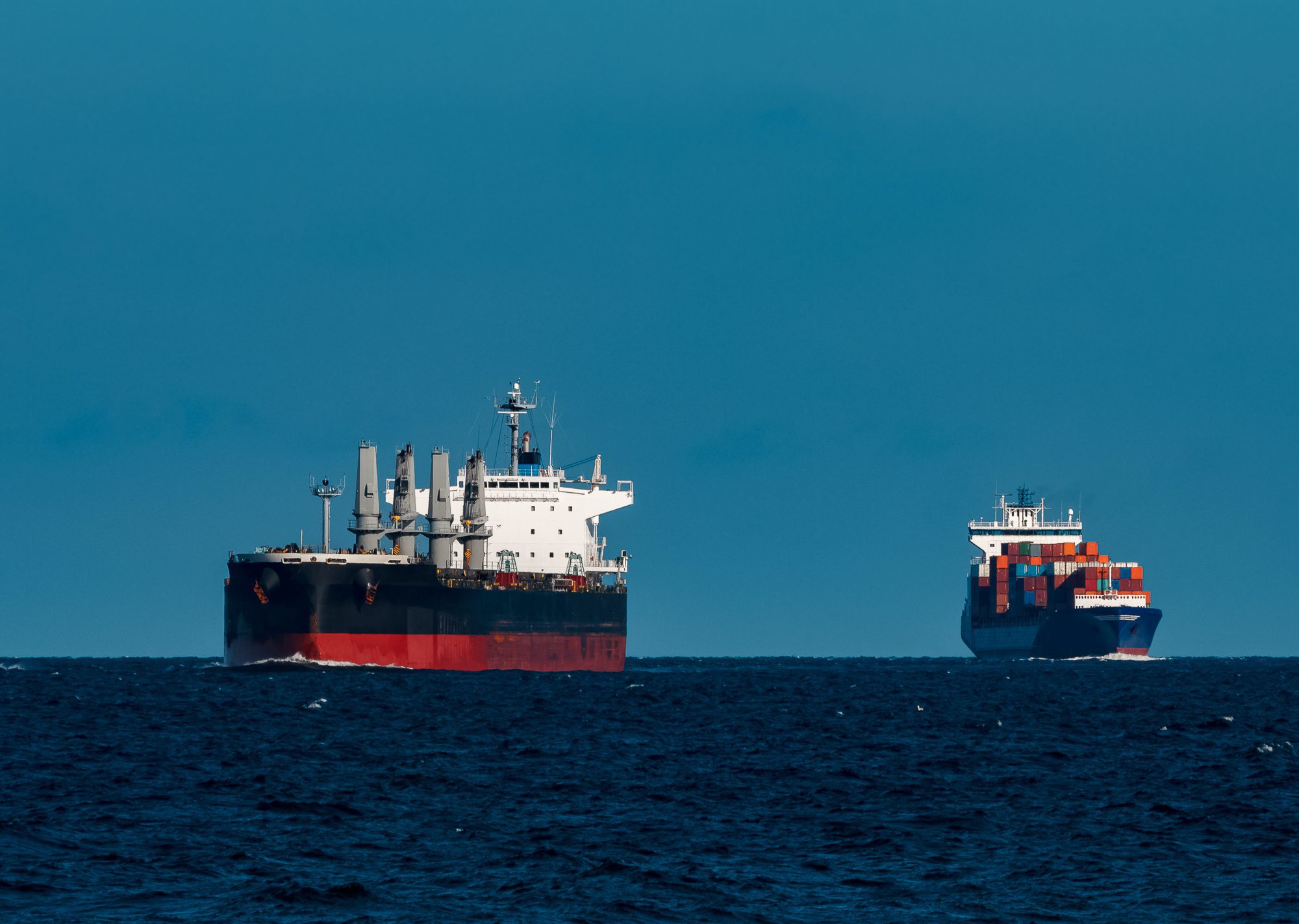Two years after damaging the Balticconnector pipeline and communication cables in the Gulf of Finland, Chinese container ship Newnew Polar Bear has set sail for the Arctic again.
The vessel received a permit for Russia’s Northern Sea Route on July 22 and is currently heading north in the Sea of Japan in the direction of the Bering Strait. Russian authorities cleared the vessel to transit the Arctic in both westward and eastward directions between August 1 and October 31.
In October 2023 the Hong Kong-flagged and Chinese-owned container ship became the primary suspect for damaging subsea infrastructure between Finland and Estonia. By the time investigators could narrow down the list of culprits, Newnew Polar Bear had reached Russia’s Arctic waters. This will be the vessel’s first return to Europe and the Arctic since the incident.
Finnish investigators found deep grooves on the sea floor and an anchor in the vicinity of the pipeline matching that of Newnew Polar Bear. The vessel was subsequently photographed with its port anchor missing during a stop in the Russian city of Arkhangelsk.
Beijing officials initially claimed that the dragging of the anchor was an accident caused by severe storm conditions, though meteorological conditions at the time were mild for the Baltic Sea in fall. Investigators and industry experts remained skeptical that the vessel could have accidentally dragged its anchor unnoticed for more than 100 nautical miles.
The Balticconnector incident was followed by a series of similar incidents raising questions about the vulnerability of Europe’s subsea infrastructure. A year later in November 2024 Chinese bulk carrier Yi Peng 3 was accused by Swedish authorities of damaging the C-Lion1 and BCS subsea data cables in the Baltic Sea, connecting Finland and Germany as well as Sweden and Lithuania.
Yi Peng 3 remained in the Danish Straits for weeks intermittently shadowed by Danish, German and Swedish coast guard and navy vessels, before it was permitted to depart. Chinese authorities denied any malicious intent or involvement in sabotage and the Swedish investigation wrapped up without conclusive evidence.
A month later in December 2024 the Estlink 2 undersea power cable along with four telecoms lines connecting Finland and Estonia were damaged. Finland seized the Cook Islands-registered Eagle S tanker on suspicion it caused the damage by dragging its anchor, adding that the ship was part of a “shadow fleet” circumventing sanctions on Russian oil.
The Newnew Polar Bear incident caused more than $40 million in damages and for months disrupted regional energy and communication infrastructure. A criminal case against Newnew Polar Bear’s captain Wan Wenguo is currently winding its way through the Chinese court system, with another round of hearings not before September 2025.

 Join The Club
Join The Club











